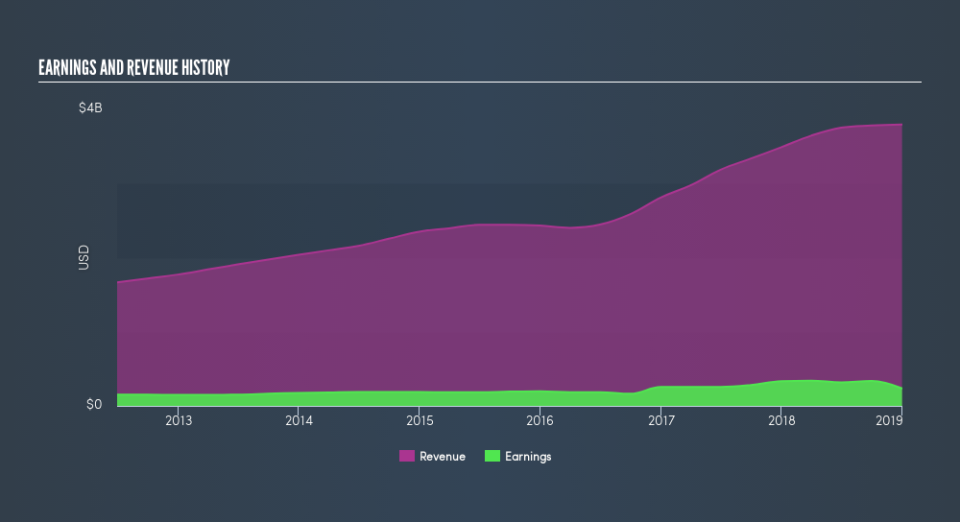Is Samsonite International S.A. (HKG:1910) A Volatile Stock?

If you're interested in Samsonite International S.A. (HKG:1910), then you might want to consider its beta (a measure of share price volatility) in order to understand how the stock could impact your portfolio. Modern finance theory considers volatility to be a measure of risk, and there are two main types of price volatility. The first category is company specific volatility. This can be dealt with by limiting your exposure to any particular stock. The other type, which cannot be diversified away, is the volatility of the entire market. Every stock in the market is exposed to this volatility, which is linked to the fact that stocks prices are correlated in an efficient market.
Some stocks are more sensitive to general market forces than others. Beta is a widely used metric to measure a stock's exposure to market risk (volatility). Before we go on, it's worth noting that Warren Buffett pointed out in his 2014 letter to shareholders that 'volatility is far from synonymous with risk.' Having said that, beta can still be rather useful. The first thing to understand about beta is that the beta of the overall market is one. A stock with a beta below one is either less volatile than the market, or more volatile but not corellated with the overall market. In comparison a stock with a beta of over one tends to be move in a similar direction to the market in the long term, but with greater changes in price.
Check out our latest analysis for Samsonite International
What 1910's beta value tells investors
Looking at the last five years, Samsonite International has a beta of 0.88. The fact that this is well below 1 indicates that its share price movements haven't historically been very sensitive to overall market volatility. If history is a good guide, owning the stock should help ensure that your portfolio is not overly sensitive to market volatility. Beta is worth considering, but it's also important to consider whether Samsonite International is growing earnings and revenue. You can take a look for yourself, below.
How does 1910's size impact its beta?
Samsonite International is a fairly large company. It has a market capitalisation of HK$34b, which means it is probably on the radar of most investors. When a large company like this trades with a low beta value, it is often because there is some other systemic factor influencing the share price. For example, commodity prices might influence a mining company strongly, while expectations around dividend payments (and capital expenditure requirements) might have a big impact on utilities.
What this means for you:
One potential advantage of owning low beta stocks like Samsonite International is that your overall portfolio won't be too sensitive to overall market movements. However, this can be a blessing or a curse, depending on what's happening in the broader market. This article aims to educate investors about beta values, but it's well worth looking at important company-specific fundamentals such as Samsonite International’s financial health and performance track record. I highly recommend you dive deeper by considering the following:
Future Outlook: What are well-informed industry analysts predicting for 1910’s future growth? Take a look at our free research report of analyst consensus for 1910’s outlook.
Past Track Record: Has 1910 been consistently performing well irrespective of the ups and downs in the market? Go into more detail in the past performance analysis and take a look at the free visual representations of 1910's historicals for more clarity.
Other Interesting Stocks: It's worth checking to see how 1910 measures up against other companies on valuation. You could start with this free list of prospective options.
We aim to bring you long-term focused research analysis driven by fundamental data. Note that our analysis may not factor in the latest price-sensitive company announcements or qualitative material.
If you spot an error that warrants correction, please contact the editor at editorial-team@simplywallst.com. This article by Simply Wall St is general in nature. It does not constitute a recommendation to buy or sell any stock, and does not take account of your objectives, or your financial situation. Simply Wall St has no position in the stocks mentioned. Thank you for reading.

